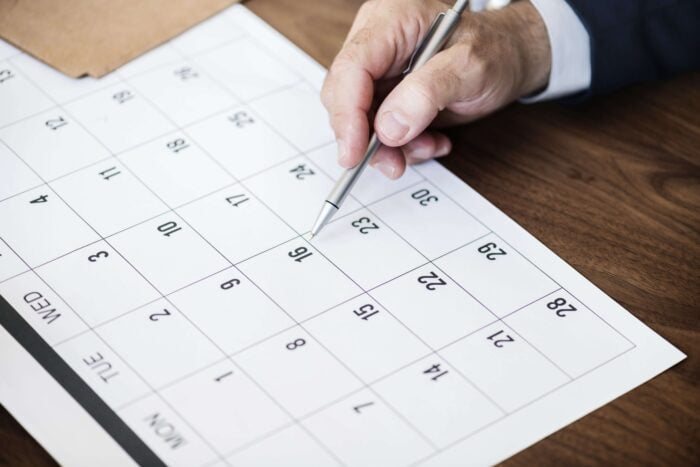How to Count in Arabic: A Beginner’s Guide to Arabic Numbers
A huge thank you to one of our top Arabic teachers, May, for helping us write this guide!
Have you ever stopped to think how many times we use numbers in informal conversations? Whether we are talking about age, prices, time, or even astrology, numbers are everywhere.
Do you want to learn Arabic so you can have meaningful conversations on your next trip? Or maybe you will need to give a presentation in Arabic explaining the impact you have had in your company? Then, one of the first things you’ll need is a thorough guide to Arabic numbers.
→Sign Up Now: Free Trial Arabic Lesson With a Native Speaker Teacher!←
Even though the rules for the use of Arabic numbers differ quite significantly from English rules, don’t let that worry you. Below, you’ll find our super easy and comprehensive lesson on Arabic numbers from 1 to 99.
Table of Contents
Arabic (Western) vs Hindi (Eastern) Numerals
As soon as you start to learn Arabic, you will see that there are two different forms of numbers: Arabic and Hindi numerals. The first thing you need to know about them is that you can use either to write exactly the same number for the same purposes.
So, what is the difference between Hind and Arabic numbers?
Arabic numerals, also known as Western Arabic numerals, are numbers written exactly in the same way we write numbers in English. Hindi or Eastern Arabic numerals, on the other hand, use Arabic symbols.
| Arabic (Western) Numbers | Hindi (Eastern) Numerals | Spelling and approximate pronunciation |
|---|---|---|
| 0 | ٠ | صفر (sifr) |
| 1 | ١ | واحد (wa-hid) |
| 2 | ٢ | اثنين (eeth-nay-ni) |
| 3 | ٣ | ثلاثة (tha-la-tha) |
| 4 | ٤ | أربعة (ar-ba-hah) |
| 5 | ٥ | خمسة (ham-sa) |
| 6 | ٦ | ستة (si-ta) |
| 7 | ٧ | سبعة (sa-bah) |
| 8 | ٨ | ثمانية (tha-ma-ni-a) |
| 9 | ٩ | تسع (ti-sa) |
Which System Should You Use?
As either Eastern or Western numbers can be used in most contexts, which one you choose depends on factors such as who your audience is and the purpose of your document.
For example, Algeria and Morocco have a clear preference for Western Arabic numbers (the same as in English), while people from Egypt, Saudi Arabia, or the UAE tend to go for Eastern Hindi ones.
You should also consider that Western Arabic numerals are better suited to a multicultural audience, as they are the most standardized or international alternative.
How to Read Eastern Arabic (Hindi) Numbers
In terms of directionality, Arabic words are written and read right-to-left. However, numbers do not follow this rule. They are read left-to-right (LTR) just as they are in English, no matter whether you use the Eastern or the Western system.
Then, of course, there are more specific rules for every kind of number, such as percentages, numbers with decimals, and dates.
In the case of percentages, the rules are really easy: All you have to do is say the number and then add the Arabic word for “percent”: بالمائة (an approximate pronunciation would be “beel-mia-di”).
Decimals are equally straightforward. In the United States, we use a period to separate unit numbers from decimals, and commas to break up large numbers into hundreds. In most Arab countries, however, the opposite rule applies. In Arabic texts, you will usually see a comma before a series of decimals, and periods being used to break up big numbers.
Now, what about calendar dates?
If you need to write down the date for an important work meeting (or just a birthday you don’t want to forget!) do it like this: start with the day, put the month in the middle, and then write the year. So, it would be DD/MM/YY. Here are a few examples:
- May 15, 2021: 15/05/2021
- December 25, 2019: 25/12/2019
- June 29, 1999: 29/06/1999
Arabic Numbers 1-99 in Detail
How to Use 1 and 2 in Arabic
One thing you have to know about Arabic numbers is that they have masculine and feminine variants. In the case of numbers 1 and 2, they always agree on gender with the thing that is being counted.
- اِثْنَان/ وَاحِد are 1 (which is pronounced similarly to “waa-hen”, with the “a” sound of “car”) and 2 (pronounced “eeth-nay-ni”) when used with masculine nouns.
- وَاحِدَة / اِثْنَتَان are 1 (sounds like “waa-hi-da”) and 2 ( approximately pronounced like “eeth-na-da-ni”) when used next to feminine nouns.
- أكَلتُ قطعةً واحِدَةً من الجُبن و شَربتُ كوبَينِ اثنَين من العَصير.| I ate one piece of cheese and drank two cups of juice.
- قَرأتُ كِتابًا واحدًا، و كَتَبتُ رسالَتين اثنتين.| I read one book, and wrote two letters.
How to Use Numbers 3-9
With numbers from 3 to 9, the form of the numbers must be plural but, on the other hand, they must disagree with the gender of the thing or person they qualify.
To make them masculine, you must omit the ‘ta’ feminine particle at the end (ة ).
- ثَمانيةُ بُيوت| eight houses
- ثَلاثُ طاوِلات| three tables
How to Use Number 10
If 10 appears in isolation, it also follows the reverse agreement rule. However, when it’s used in a compound that ends in any number from 3 to 9, it must have the same gender as the preceding noun.
Bear in mind that, for number 10 عشرة, the masculine form is also written without the ة. Instead, it takes a ْover the ش, resulting in عَشْرٌ.
- لَدَيَّ عَشرُ صديقات | I have ten girl friends
How to Use Numbers 11-12
Here things start getting a bit more complicated. While numbers under 11 are always followed by plural nouns, when you start counting past 11, nouns are always singular. So you have “three cars”: ثلاث سيارات , but “thirty car”: ثلاثين سيارة .
Another thing you should know is that, when 11 precedes a masculine noun, it influences both the tens number عَشر (e.g. 10, 20, 30, etc.) and the unit number َأحَد عَشر, which become masculine. In that case, they are both used in the singular accusative form. This means that, at the end of the number, you’ll have to pronounce a short “a” sound.
Bear in mind that, in this case, there is no nunation, which is why there is no vowel diacritic, and the word ends in “a” and not “an.”
For instance, “twelve students” in Arabic is إثنا عَشَرَ طالِبًا .
Conversely, if the thing or person being counted is feminine, then the two elements in the number must be made feminine: إِحْدَى .
Let’s take the phrase “twelve farms” – إثنَتا عشَرَةَ مَزرَعَةً . Since the noun “farms” is feminine in Arabic, both parts of the number must show gender agreement.
12 follows the same rules as 11 but with a twist: The first part of the number 12 is إثْنَا for the masculine nominative case, but is إِثْنَىْ for masculine nouns inflected for other cases.
In case you don’t remember the differences between these three cases, here is a quick reminder:
- nominative — subject
- accusative — direct object
- genitive — possession
When the first part is feminine, it also changes to show gender. The feminine is إثْنَتا when the noun serves as a subject (nominative case) and إِثْنَتَيْ for nouns in the position of a direct object (accusative case).
Let’s read an example:
- هناك اثني عشر صبيا واثني عشر فتاة في الحديقة | There are twelve boys and twelve girls in the park.
How to Use Numbers 13-19
For numbers from 13 to 19, the rules are quite simple.
1. The first element in these numbers (ثلاثة, اربعة… etc.) presents the non-agreement pattern that we saw for 3-10.
2. The second element (عَشر or عَشرة) must have the same gender as the noun being counted.
3. The two parts of the number always appear in their accusative declension and they don’t take nunation (vowel diacritics).
4. The thing or person being counted, on the other hand, is accusative, singular, and does take nunation.
For example:
- ثَلاثَةَ عَشَرَ دَرْسًا | thirteen classes
- ًخَمْسَ عَشْرَةَ تفاحَة | fifteen apples
How to Use Numbers 20 to 90
These are the numbers that we use to give quantities, measures, or years.
Luckily, the rules for this group of Arabic numbers are easy to remember. Essentially, we are dealing with plural versions of numbers 2 to 10.
- 20 عِشْرُونَ
- 30 ثَلاثُونَ
- 40 أَرْبَعُونَ
- 50 خَمْسُونَ
- 60 سِتُّونَ
- 70 سَبْعونَ
- 80 ثَمَانُونَ
- 90 تِسْعُونَ
Something you should know about these Arabic numbers is that they change depending on the grammatical case (remember: nominative, accusative, genitive), and they have no feminine forms.
To make numbers like 31, 32, 33…, 99, you have to put the numbers 1 to 9 after the first digit that you want to use. The particle وَ is used to link both parts.
Bear in mind that the unit numbers for 1 and 2 are the only ones that must agree with the preceding noun, just like they do when used in isolation.
For example:
- 21 books: و وَاحِدٌ و عِشرُونَ كتابًا or أحَدٌ وعشرون كتابًا.
- 21 letters: وَاحِدَةُ وعِشْرُونَ رسالةً or إحْدَى وعِشرونَ رسالة.
If your motivation to learn Arabic comes from a desire to socialize and have meaningful conversations with people, you will have plenty of opportunities for using these numbers. For example, you might say things like:
- أمي تبلغ من العمر واحد وتسعين عامًا. | My mother is ninety-one.
- توفي والدي العام الماضي عن عمر يناهز التاسعة والثمانين. | My father passed away last year, at eighty-nine.
And if you want to learn Arabic so you can find a job in an Arab country, the Arabic numbers we have covered so far will also be extremely helpful. They are the ones you will use to talk about times, schedules, and meetings.
For example, you might say something like:
- الاجتماع مع المستثمرين غدًا في التاسعة. | The meeting with the investors is tomorrow at 9.
So, there you are. That’s the end of our guide on Arabic numbers. Now, if you want to practice using Arabic numbers, answer these questions! (Yes, you can check your notes).
- How old are you? (كم عمرك؟)
- How many siblings do you have? (ما هو عدد الأشقاء لديك؟)
- How many years of experience do you have in your current job? (كم عدد سنوات الخبرة التي تمتلكها في وظيفتك الحالية؟)
- How many books have you read this year? (كم عدد الكتب التي قرأتها هذا العام؟)
→Sign Up Now: Free Trial Arabic Lesson With a Native Speaker Teacher!←
Though learning Arabic numbers is a great first step, if you really want to improve your fluency, the best thing you can do is take lessons with a teacher. At Language Trainers, we work with fully qualified Arabic instructors who are also native speakers of the language. Contact us now and ask for our Free Trial Arabic Lesson. We’ll pair with one of our Arabic teachers and your first class will be on us!



